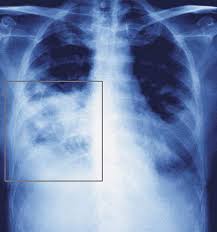The Joint Commissions Core Measures serve as a standardized assessment measure for care given in specific areas. Despite widespread dissemination of the core measures, safety goals, and related quality guidelines, there is significant variation in their application across hospitals. The reasons for this are varied but include differences in guideline familiarity, provider training, and tools and systems to ensure that recommended care is provided and documented. Also hospital type, size, and location have been found to correlate with compliance rates. Other hospital characteristics such as physician leadership and organizational support also appear to contribute to the consistent use of evidence-based processes of care. (Andrew L. Masica, Richter, MS, MFA, ELS, Convery, MD, MMM, CPE, & Haydar, MD, MBA, 2009)
We will now look at the evidence behind the Core Measure Set for Pneumonia
| Measure Set # | Measure Name |
| PN-3a | Blood Cultures Performed Within 24 Hours Prior to or 24 Hours After Hospital Arrival for Patients Who Were Transferred or Admitted to the ICU Within 24 Hours of Hospital Arrival |
| PN-3b | Blood Cultures Performed in the Emergency Department Prior to Initial Antibiotic Received in the Hospital |
| PN-6 | Initial Antibiotic Selection for CAP (Community Acquired Pneumonia) in Immunocompetent Patient |
| PN-6a | Initial Antibiotic Selection for CAP in Immunocompetent—ICU Patient |
| PN-6b | Initial Antibiotic Selection for CAP Immunocompetent—Non ICU Patient |
PN—3a: Blood Cultures Performed Within 24 Hours Prior to or 24 Hours After Hospital Arrival for Patients Who Were Transferred or Admitted to the ICU Within 24 Hours of Hospital Arrival
- Although recommendations for blood cultures are controversial due to the overall low yield, they can have a significant impact on the care of an individual patient and are important for epidemiologic reasons, such as antibiotic susceptibility patterns used to develop treatment guidelines. Pretreatment cultures are recommended because the yield of clinically useful information is greater if the culture is collected before antibiotics are administered.
PN—3b: Blood Cultures Performed in the Emergency Department Prior to Initial Antibiotic Received in the Hospital
- This measure focuses on treatment provided in the Emergency Department where the largest number and variety of pneumonia patients receive treatment prior to admission orders. A review of performance measure data from the pneumonia national hospital quality measures over the past few years indicates that 68 to 70% of patients admitted to the hospital for pneumonia receive care and services in the ED prior to admission. The ED also serves as a triage point for the next level of care; intensive care, or general unit. In concordance with the guideline recommendations, the performance measure does not require blood cultures for all ED patients, but if a culture is done, it must be done prior to administration of the first dose of antibiotics received in the hospital in order to meet the intent of this measure.
- Data Elements:
- Antibiotic Administration Date
- Antibiotic Administration Time
- Antibiotic Name
- Arrival Date
- Arrival Time
- Blood Culture Collected
- Initial Blood Culture Collection Date
- Initial Blood Culture Collection Time
PN—6: Initial Antibiotic Selection for CAP (Community Acquired Pneumonia) in Immunocompetent Patient.
PN—6a: Initial Antibiotic Selection for CAP in Immunocompetent—ICU Patient
PN—6b: Initial Antibiotic Selection for CAP Immunocompetent—Non ICU Patient
- The current North American antibiotic guidelines for Community-Acquired Pneumonia in immunocompetent patients are from the Centers for Disease Control and Prevention (CDC), the Infectious Diseases Society of America (IDSA), the Canadian Infectious Disease Society / Canadian Thoracic Society (CIDS/CTS), and the American Thoracic Society (ATS). All four reflect that Streptococcus pneumonia is the most common cause of CAP, that treatment that covers “atypical” pathogens (e.g., Legionella species, Chlamydia pneumonia, Mycoplasma pneumonia) can be associated with improved survival, and that the prevalence of antibiotic resistant S. pneumonia is increasing.
- Data Elements for PN—6 and PN—6b:
- Antibiotic Administration Date
- Antibiotic Administration Route
- Antibiotic Administration Time
- Antibiotic Allergy
- Antibiotic Name
- Arrival Date
- Arrival Time
- Pseudomonas Risk

- Data elements for PN—6a:
- Antibiotic Administration Date
- Antibiotic Administration Route
- Antibiotic Administration Time
- Antibiotic Allergy
- Antibiotic Name
- Arrival Date
- Arrival Time
Pneumonia ranks #1 in the 13 most common health-care associated infections (HAI) (Rosin, 2014). Obtaining blood cultures prior to administration of antibiotic therapy is crucial in determining the most appropriate antibiotic therapy. Routinely 2 sets of blood cultures (at least) should be drawn from separate sites. The timing between sets can be done within minutes of each other. It has been found that at least 99% of all infections were detected when 2 blood culture sets are drawn (a total of 30 ml). Blood cultures are drawn to determine if the pneumonia has become systemic.
When reviewing a case involving Pneumonia I utilize the Joint Commission Core Measures to determine if there was any lack of following these measures with this particular patient. If I find that the Core Measures were not adhered to I may then ask for the hospitals education files for the staff involved regarding Joint Commission Core Measures. Nurses should be proactive with the patients in their care in making sure that these Core Measures are followed.
Works Cited
Andrew L. Masica, M. M., Richter, MS, MFA, ELS, K. M., Convery, MD, MMM, CPE, P., & Haydar, MD, MBA, Z. (2009, April 22). Linking Joint Commission inpatient core measures and National Patient Safety Goals with evidence. Retrieved August 8, 2013, from US National Library of Medicine, National Institute of Health: http://www.ncbi.nlm.nih.gov/pmc/articles/PMC2666853/
Rosin, T. (2014, September 4). 13 most common healthcare-associated infections. Retrieved September 17, 2014, from Becker’s Infection Control and Clinical Quality: http://www.beckershospitalreview.com/quality/13-most-common-healthcare-associated-infections.html
If you have a case involving Pneumonia Alvin & Associates, Legal Nurse Consultants would be happy to assist you with a review of your case.
Leave a Comment